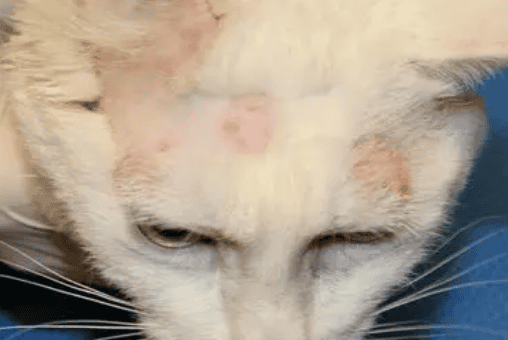Feline ringworm is a skin disease caused by a fungus that usually affects the skin and coat of cats. The following is the development process of cat ringworm and the typical symptoms of each stage:
Initial stage: At this stage, the symptoms of cat ringworm may be relatively mild and difficult to detect. You may notice small areas of hair loss on your cat, dandruff on the ends of the hair, or circular ringworm spots on the skin. These ringworm spots are usually small and may involve just a small patch of hair loss. During this stage, when the affected area is illuminated with a Wood's lamp, a blue-green fluorescence may appear, which is a typical feature of fungal infection.

Development stages: As the disease progresses, the symptoms of cat ringworm will gradually worsen. You may see more areas of hair loss on your cat's skin, and dander and scabs may become more noticeable. In addition, cats may scratch the infected area frequently due to itching, resulting in redness, swelling, erosion and other symptoms on the skin. At this stage, cat ringworm becomes more contagious and can easily be transmitted to other animals or people.
Severe stage: If cat ringworm is not treated in time, the condition may worsen. Cats may have symptoms such as large areas of hair loss, blackening of the skin, and scabs on their skin. Severe cat ringworm may also affect the cat's health, causing systemic symptoms such as loss of appetite and lethargy.

 扫一扫微信交流
扫一扫微信交流
发布评论